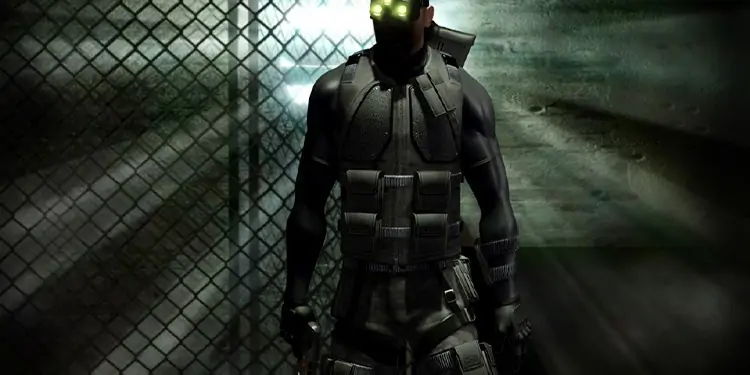Splinter Cell and the tie-in novels are stories of a single person, Tom Clancy. We’re looking at the adventures of its protagonist, Sam Fisher, and see what we’ve been missing from the FPS story-driven game series.
In these Ubisoft games, each entry got great review scores (an 8/10 average) and moderate commercial success. However, Splinter Cell is far from the popularity of Ubisoft’s multiplayer shooters like Rainbow Six Siege.
Also, Tom Clancy wrote seven Splinter Cell books. The last one, “Backlist: Aftermath,” debuted in 2013. Sadly, the author died in 2013, perhaps why Ubisoft abandoned Splinter Cell. Either way, the French/Canadian studio moved towards other Tom Clancy works like Ghost Recon, The Division, and Rainbow Six.
The series ended in 2013 after seven entries plus an H.D. remaster bundle. Ubisoft and Facebook Connect are currently working on a VR Splinter Cell title. It’s how the series plans to come back after almost a decade of silence.
The Splinter Cell Series
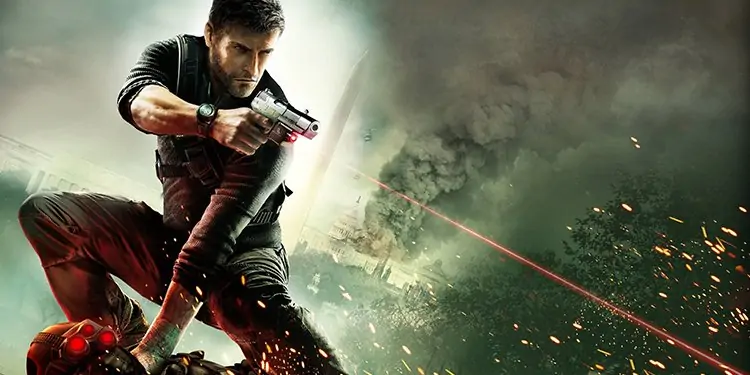
The Splinter Cell games introduce Sam Fisher, a black-ops operative, member of the NSA sub-division “Third Echelon.”
Each game presents a top-secret mission. Fisher goes to remote locations to retrieve information, capture terrorists, and eliminate enemies.
This setting opens up a third-person linear stealth shooting game. For the task, Fisher uses Trifocal Goggles to enable night vision and thermal vision. It’s the signature item of the series, and subsequent games added more features to the goggles.
Curiously, when Ubisoft presented the gear to Tom Clancy, the author considered it a sci-fi, unrealistic idea. He said these goggles wouldn’t be possible to produce, but Ubisoft convinced him either way. In 2004, though, Northrop Grumman made a similar device.
Every Splinter Cell Game in Order by Release Date
Tom Clancy’s Splinter Cell – 2002
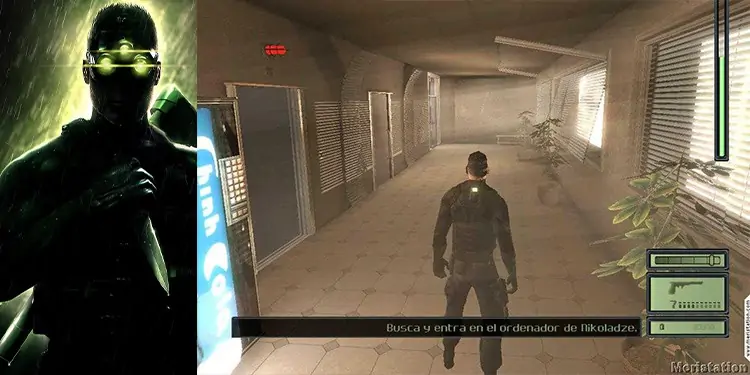
Splinter Cell debuted in 2002 as an Xbox Exclusive. Ubisoft Montreal was the developer, and Microsoft Game Studios was the publisher. Over time, the title premiered for PlayStation 2, PlayStation 3, GameCube, Game Boy Advance, N-Gage, macOS, and Windows.
U.S. Navy SealSam Fisher joins the National Security Agency. He becomes part of the “Third Echelon” department. Soon, his first mission as a recon officer sent him to Georgia to find two missing CIA officers. He finds out a terrorist is waging an ethnic genocide across Azerbaijan.
The setting opens up stealth gameplay on dark corridors, officers, basements, and similar. The player moves through shadows and corners to conceal and uses the goggles to check the surroundings.
Sam Fisher carries firearms, but ammo is limited, and weapons are not very strong. So, he must rely on suppressed fire, airfoil projectiles, and gas grenades to stun and defeat the enemies silently.
Also, Fisher can grab enemies from behind., It allows him to incapacitate, interrogate, or use enemies as a shield. Other maneuvers include climbing, hanging from pipes, and jumping.
The series opened up with commercial success. It sold about 6 million copies, but the franchise never reached the high mark again.
Tom Clancy’s Splinter Cell: Pandora Tomorrow – 2004
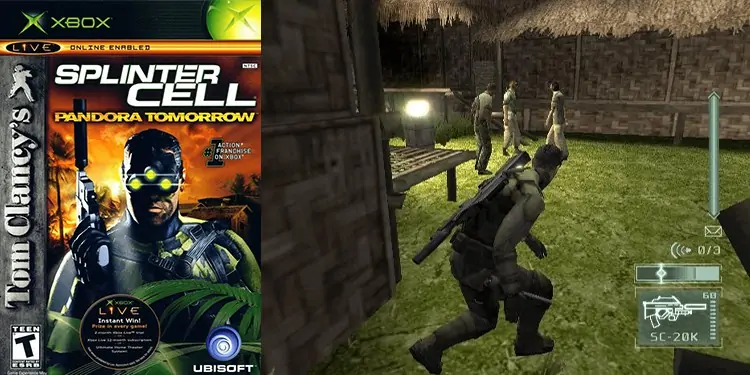
Pandora Tomorrow debuted in 2004 for the PlayStation Network. Later on, it became available for Xbox, Windows, and Game Boy Advance.
Sam Fisher returns for another mission. The goal is to stop a terrorist group from Indonesia, threatening the world with a biological weapon. It’s a scheme by the “Darah Dan Doa” group known as the “Pandora Tomorrow.”
The formula remains unchanged from the previous title. Yet, it has moderate graphical improvements and minor gameplay changes. For instance, health kits are not an inventory item anymore.
Another new addition was a laser sight to Sam’s main pistol. It helps the player understand where a bullet will strike. Additionally, Sam can shoot while hanging upside down, move from one side of a door to the other in cover, and open doors while carrying a body.
Tom Clancy’s Splinter Cell: Chaos Theory – 2005
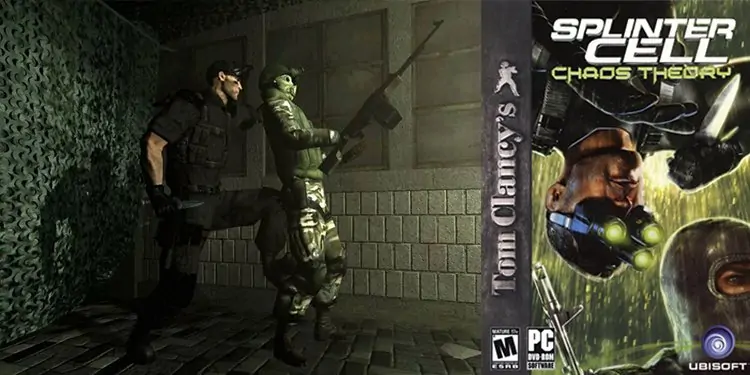
Chaos Theory debuted in 2005 for PlayStation 2, GameCube, and Windows. Later on, it became available for Nintendo D.S. and N-Gage.
The third entry follows Sam Fisher on a darker and more combat-oriented quest. Notably, Fisher has the option to kill or knock out the people he interrogates, which is why the title got an M-rating. However, killing innocent civilians and friendly soldiers can fail side objectives and cause punishment from Fisher’s superiors.
Then, the game brought various changes and refinements to the series’ gameplay. Notably, it’s the first to use ragdoll physics. Additionally, Sam has an aural monitor to check his and ambient noises.
On the same note, Sam carries a combat knife to improve stealth takedowns and close combat abilities. Similarly, he can choose between three weapon loud-outs for each mission, each one combining a set of lethal and non-lethal weapons and tools.
Similarly, the A.I. improved, so enemies can detect players if Sam is sloppy or noisy. They can also notice Sam when they find bodies, by alarms, or by security cameras.
As for the plot, Fisher must infiltrate a hostile territory during a Japan-Korea conflict. In enemy territory, he collects key intel to stop an upcoming war.
Tom Clancy’s Splinter Cell: Essentials – 2006
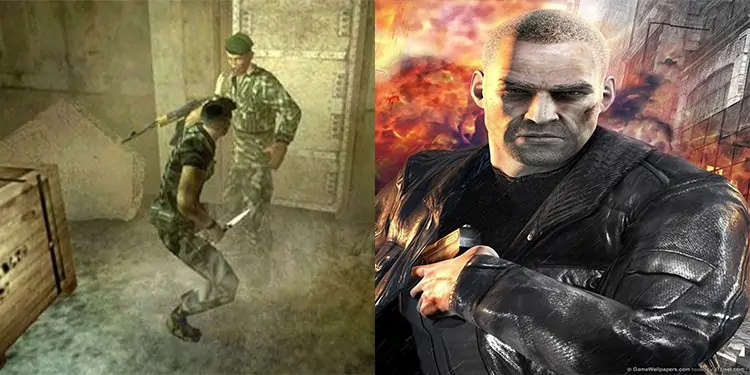
Essentials is the first Splinter Cell game for the PlayStation Portable. Ubisoft released the game in 2006.
The plot follows former NSA agent Sam Fisher, now a fugitive, sneaking into Washington D.C. He visits her daughter’s tombstone. The NSA arrests Fisher, and he must find a way to escape.
This was a simpler, shorter take on the series. Still, the emphasis on stealth and non-lethal weaponry is greater than ever.
Tom Clancy’s Splinter Cell: Double Agent – 2006
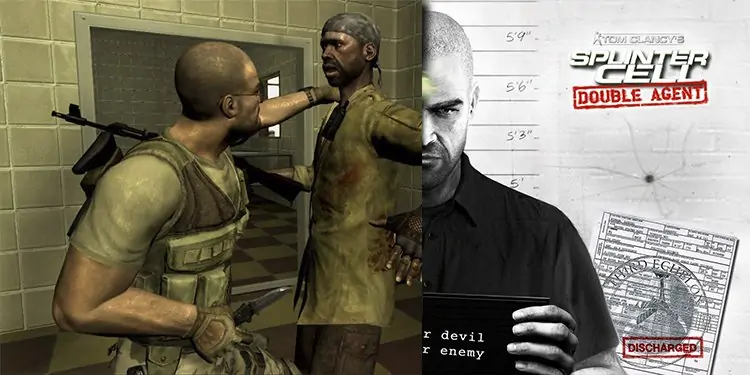
Double Agent debuted in 2006 for Xbox 360, GameCube, PlayStation 2, PlayStation 3, and Windows.
There’re three Double Agent versions. The storylines, levels, and plot twists change depending on the console. However, every version follows the same plot, music, some cut scenes, main locations, and voice actors.
Before Essentials, the titular character must deal with the death of his daughter during a drunk driving accident. He doesn’t have time to mourn, though, as the NSA sends him as undercover as a criminal into a USA terrorist group.
The mission forces Fisher into dangerous decisions. The agent must learn how to balance his duty, the task, and the lives of the innocent.
Aside from the multiple versions, the gameplay remains unchanged. There’s more focus on stealth and conversations, less in combat, and playtime is too short. These are the reasons why the game received a negative reception.
However, either version plays on both sides of the equation. The NSA and the terrorist have opposing goals, and you can choose who to support with your actions. This means that, upon returning from your linear missions, you return to the terrorist base, the hub. Here, you can talk to NPCs to gather intel and get additional side missions that may affect the storyline.
Another novelty is weapon upgrades and gadgets. For example, the Trifocal Goggles can get better night vision.
Lastly, the game has multiple endings. The closure depends on the objectives Sam Fisher completes. Either conclusion turns Fisher into a fugitive for treason, conspiracy, and terrorism.
Tom Clancy’s Splinter Cell: Conviction – 2010
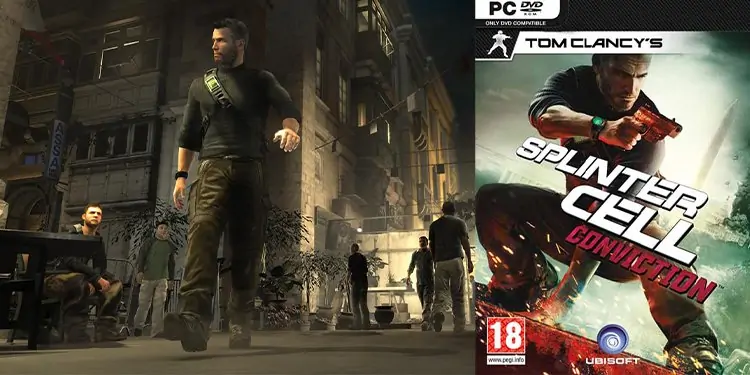
Conviction debuted in 2010 for Xbox 360, Windows, and macOSX. Gameloft also ported the game for iOS, Android, Windows Phone, and Java ME-enabled phones.
The game added new core elements while polishing the graphics, gameplay, and performance. A new gameplay mechanic includes marking targets for a rapid-fire succession (“Mark & Suppression”). Another novelty is an improved A.I. system that makes enemies check on “The Last Known Position,” allowing Fisher to flank the enemies.
Another significant novelty is interrogating characters in real life. It means Fisher can use items in the environments against them.
Lastly, the title has a split-screen multiplayer mode for the Xbox 360. It also has various online co-op modes.
As for the plot, it follows Sam Fisher after the events of Double Agent. The story takes him to save the president and clear his name. However, the “Prologue” mission is only available in co-op mode.
Tom Clancy’s Splinter Cell Classic Trilogy HD – 2010 (Remaster Bundle)
In 2010, Ubisoft released a bundle that packs the first three games in the series. These came as H.D. remasters for PlayStation 3 and Nintendo 3DS.
Tom Clancy’s Splinter Cell: Blacklist – 2013
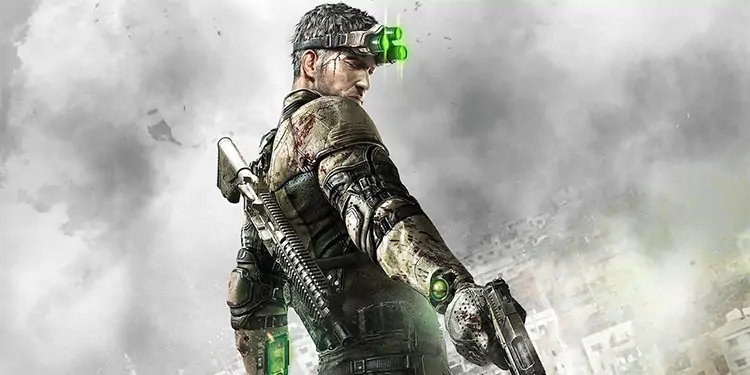
Blacklist is the last Splinter Cell entry. It’s an action-adventure stealth title by Ubisoft, and it debuted for PlayStation 3, Xbox 360, and Windows.
Sam Fisher returns as the titular spymaster. He’s working for the newly formed “Fourth Echelon.” The mission is to stop the Engineers terrorist group, trying to seize control in the United States.
The gameplay is similar to previous titles. Players must complete a set of objectives on each mission. Moreover, Fisher has the option of using lethal or non-lethal tools and sneaking and using stealth takedowns.
The playtime emphasizes stealth nonetheless. Players can complete levels without the enemy noticing Fisher’s presence. Otherwise, enemies can remain vigilant if they find a dead body.
For novelties, Fisher can destroy artificial lights to keep environments dark. He also gets customizable night-vision and sonar goggles. Additionally, he has a surveillance drone to spy on enemies, shock, distract, and self-destruct to deal damage.
The game also allows aggressive runs by using weapons and weapon gadgets. Either option requires players to interact with the environment to progress levels. There’re zip-lines, walls to climb, ledges to jump from, and similar.
Also, there’s a new game hub, The Paladin (a military aircraft). In-between missions, players can interact with teammates to gather intel and side quests. Also, before a mission, Fisher can learn enemy positions to plan routes and attacks.
Lastly, the game includes a “Spies vs. Mercs” PvP multiplayer mode. Mercs play in first-person and a different load-out than spies, playing in third-person.
Every Splinter Cell Game in Chronological Order
- Tom Clancy’s Splinter Cell – 2002
- Tom Clancy’s Splinter Cell: Pandora Tomorrow – 2004
- Tom Clancy’s Splinter Cell: Chaos Theory – 2005
- Tom Clancy’s Splinter Cell: Essentials – 2006
- Tom Clancy’s Splinter Cell: Double Agent – 2006
- Tom Clancy’s Splinter Cell: Conviction – 2010
- Tom Clancy’s Splinter Cell Classic Trilogy HD – 2010
- Tom Clancy’s Splinter Cell: Blacklist – 2013

